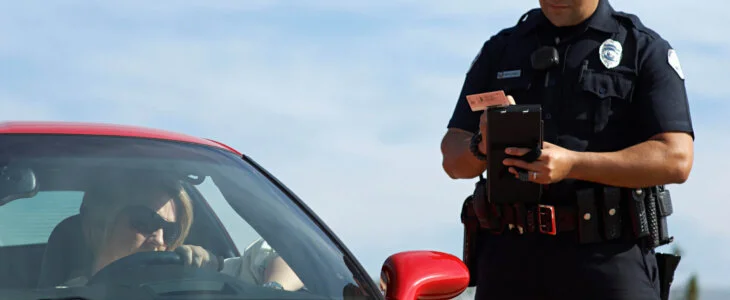Getting a traffic ticket is never a pleasant experience. However, not all tickets are created equal. Some minor infractions can be resolved with what is known as a “fix it ticket.” This type of ticket offers drivers an opportunity to correct certain violations without incurring hefty fines or enduring the hassle of a court appearance.
READ MORE: New Bill On Newsom’s Desk Could Be A California Speed Limiter
Fix it tickets, also known as proof of corrections violations, are in California are common. Receiving a fix it ticket can feel overwhelming, but with Deldar Legal, there’s no need to worry. Our knowledgeable attorneys specialize in traffic law and can assist you in every step of the process. Now, let’s get into the details:
What Is A Fix It Ticket?
A fix it ticket, also known as a “correctable violation,” is issued for minor infractions that can be remedied easily. Common examples include a broken taillight, an expired registration, or a missing license plate. Instead of paying a fine, the driver is given a chance to fix the issue within a specified period, usually 30 days, and then provide proof of the correction to the court or a law enforcement agency.
How Does A Fix It Ticket In California Work?
When you receive a fix it ticket, it’s crucial to address the problem promptly. First, read the ticket carefully to ensure you understand the violation and the deadline for making the necessary corrections. Next, make the correction by fixing the issue cited in the ticket. This might involve repairing a broken part of your vehicle, updating your registration, or addressing any other specified problems.
After making the correction, you need to get proof. This typically involves having a law enforcement officer or an authorized inspection station sign off on your ticket to confirm that the issue has been resolved. Once you have the signed-off ticket, return it to the court or the specified agency. You might also need to pay a small administrative fee. Finally, always keep copies of your documents and receipts related to the correction and submission process.
Common Scenarios
There are several typical scenarios where you might receive a fix it ticket. For instance, broken lights, such as a headlight, taillight, or turn signal, are common reasons. Another frequent cause is driving with an expired vehicle registration, which can be resolved by renewing your registration and providing proof. Missing or damaged license plates can also lead to a fix it ticket if your vehicle’s license plates are missing, damaged, or not properly displayed.
3 Simple Steps To Avoid Fix It Tickets
Preventing fix it tickets involves regular maintenance and adherence to traffic laws:
- Regular Vehicle Inspections: Check your vehicle for any potential issues, including lights, registration status, and overall condition.
- Stay Informed: Be aware of the traffic laws and regulations in your area to avoid violations.
- Prompt Repairs: Address any minor vehicle issues immediately before they escalate into more significant problems or result in a ticket.
Remember, if you do have any correctable violations, the vehicle must be inspected by a law enforcement agency, and an officer will sign off on the back of your citation. The process is very quick and should only take a few minutes at your nearest branch of law enforcement.
Closing Thoughts
Failing to correct the violation and provide proof within the specified time frame can lead to more severe consequences. The fix it ticket might be converted into a regular traffic ticket, resulting in fines, points on your driving record, and potential increases in your insurance rates. In some cases, ignoring a fix it ticket can lead to a warrant for your arrest.
If you do receive a fix it ticket, remember that timely correction and proof submission are key to resolving the issue efficiently. For those needing help or who have questions, contact us at (844) 335-3271. We’re here to assist you every step of the way!


